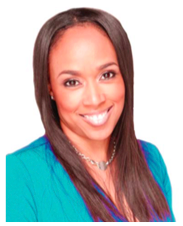
Breaking Down Barriers & Stereotypes
We have become not a melting pot but a beautiful mosaic. Different people, different beliefs, different yearnings, different hopes, different dreams.
Jimmy Carter
The pathway to reducing and disintegrating implicit stereotypes and breaking down barriers to diversity starts from the self and has to go a long way before one could embrace diversity and inclusiveness in all its forms.
Let’s discuss the three main milestones for breaking down stereotypes and encouraging an all-inclusive society here.
Step 1: Changing personal approach
- Towards an individual
We are each responsible for changing our stereotypes and breaking down the barriers. The first step is acknowledging that you’re human, will probably make some mistakes, and likely do have some stereotypes. Next, work to become more aware of your inner thoughts and feelings — and how they affect your beliefs and actions. We typically make a judgment about someone in less than 30 seconds. To change your personal approach to diversity, try these steps when you make contact with a new person:
- Collect information
- Divide out the facts from your opinions, theories, and suppositions
- Make judgement based only on the facts
- Periodically refine your judgment based on the facts
- Try to continue expanding your opinion of the person’s potential
- Towards a group
When you have a stereotypical thought about a group that is different from you, follow it up with an alternative thought based on factual information that discounts the stereotype.
- Openly confront a discriminatory comment, joke, or action among those around you
- Risk a positive stand against discrimination when the opportunity occurs
- Become increasingly aware of discriminatory TV programs, advertising, news broadcasts, holiday observations, slogans, and other venues
- Investigate and evaluate political candidates at all levels regarding their stance and activity against discrimination
- Contribute time and/or money to an agency, fund, or program that actively confronts the problems of discrimination
- Sever your affiliation with organizations that have discriminatory membership requirements
- Learn some of the languages of those in your community who speak other than standard English
Step 2: Encouraging workplace changes
Diversity initiatives usually start at the top of an organization, but change can be affected from any level. If you work in human resources, or in a functional position of authority, consider performing a cultural audit to describe the overall working environment, unwritten norms, possible barriers, and the existence of race, gender, and class issues.
The following can be considered
- Are there biases and stereotypes in the organization?
- Is there hostility among co-workers? What distinguishing background characteristics do you notice?
- Suggest and take steps to implement discussions or workshops aimed at understanding and eliminating discrimination with friends, colleagues, social clubs, or religious groups
- Leave copies of publications that educate about diversity in sight where your friends and associates might see them and question your interests
Step 3: Encouraging social changes
Below are some suggestions to encourage breaking down stereotypical barriers in social, community, and other non-work settings.
- Investigate the curricula of local schools in terms of their treatment of the issues of discrimination (also discrimination in textbooks, assemblies, faculty, staff, administration, and athletic programs and directors)
- Evaluate your buying habits so that you do not support shops, companies, or personnel that follow discriminatory practices
Conclusion
As you gain more awareness and knowledge about groups different than you, not only will your stereotypes lessen, but you will also become better equipped to educate and challenge others about their stereotypes.
Note: This post is excerpted from Dr. Cherry Collier’s “The Science and Art of Breaking Down the Barriers and Bias in Diversity” available here.

